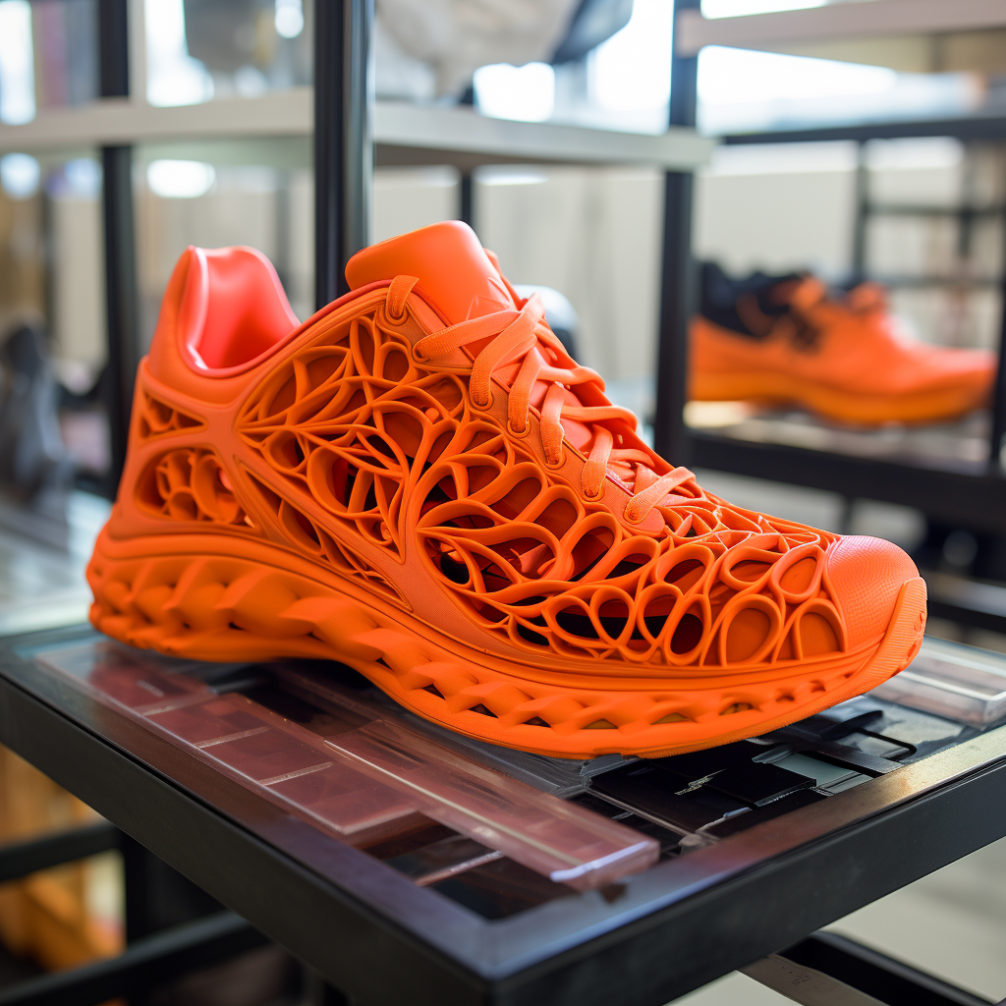TPU filament is a popular material in the world of 3D printing due to its unique properties and wide application possibilities. In this article we explore the world of printing with TPU filament. We will discuss the properties of TPU, provide examples of applications and share useful tips to achieve successful prints with this flexible material.
What is TPU filament ?
TPU stands for Thermoplastic Polyurethane, a flexible and resilient polymer widely used for its excellent elasticity, tear strength and abrasion resistance. It combines properties of rubber with other thermoplastics such as elasticity and resistance to other wear and tear and oils.
Applications of TPU filament:
TPU filament offers a wide range of applications. We highlight some popular applications such as flexible parts, rubbery components, shoe soles, phone cases, protective covers, dampeners and much more. We show how the flexibility and durability of TPU contribute to the functionality of these applications. In short, TPU filament is characterized by the following properties:
Flexibility : TPU filament is extremely flexible and can be bent, stretched and compressed without breaking. This makes it ideal for creating objects that need to bend or deform.
Elasticity : TPU has high elasticity, meaning it tends to regain its original shape after being stretched or compressed.
Wear resistance : Thanks to its high wear resistance, TPU is suitable for applications where the material is regularly exposed to friction, such as hinges or sliding parts.
Shore hardness : TPU filaments are available in different Shore hardness values, which indicate the firmness or softness of the material. Lower values (e.g. 85A) produce a softer and more flexible result, while higher values (e.g. 95A) produce a firmer material, depending on 3D printer settings.
Print settings for TPU filament:
Successful printing with TPU requires specific settings and adjustments. By configuring these settings correctly, you can achieve better results and prevent problems such as incorrect adhesion or blockages.

- Print temperature : TPU filament generally requires a lower printing temperature than many other materials. A typical temperature is between 210°C and 230°C, but this can vary depending on the specific brand and composition of the filament. Experiment with different temperatures to achieve the best results. See also the next point (print speed), the speed also largely depends on this.
- Print speed : It is recommended to reduce the print speed when printing with TPU filament. A lower speed reduces the chance of problems such as filament build-up, blockages or stretching of the filament. Our biggest tip is to keep the speed the same everywhere, so for the first layer, the subsequent layers but also the perimeters, infill and other areas.
- Layer height : A higher layer height can be useful when printing with TPU, as the material is less prone to cracking. A layer height between 0.2 mm and 0.3 mm is often recommended.
- Print bed adhesion : To ensure good adhesion between the TPU filament and the print bed, it can help to use a printing surface with good adhesion, such as a flexible printing surface or an adhesive spray specifically for flexible filaments. Please note that TPU can also adhere too well. A textured print surface is generally better than a flat surface as it can coalesce in extreme cases.
- Support material : in some cases it may be necessary to use support material when printing complex designs with TPU filament, but try to avoid this at all times. Remove the support carefully to avoid damage to the object. Given the flexibility of the material, it can be difficult and sharp tools are therefore recommended to remove it neatly.
Additional tips for successful prints with TPU filament
In addition to the standard settings, there are some options to achieve even better results. one of them is increasing the speed of the movements. Because it is advisable to lower the retraction slightly (due to blockages), it is good to counter this with a higher movement speed to ensure that the extruder is 'leaking' for as short a time as possible. With 95A shore TPU filament it is possible to keep retraction almost the same as PLA filament, but with 85A shore TPU filament it is better to keep it a bit lower. Finally, it is best to use a direct-drive extruder for TPU filament. With a Bowden setup, the material stretches, which does not benefit the results. Discover all 3D printers and cutters at Filamentz .
TPU filament maintenance and storage
TPU filament is a hygroscopic filament, which means that moisture from the air ends up in the material over time. It is therefore advisable to dry the filament before use or to close it in an airtight environment with some air dehumidifier. When drying TPU filament, it is recommended to do this for approximately 12 hours at a temperature of 80 degrees Celsius. Please note that the coil may also be intended for this purpose.
What is the best TPU filament?
We at Filamentz recommend Kexcelled TPU filament , with shore hardness 95A. This is available in different colors and prints very easily.
Learn more about our team and our mission on the About Us page.

